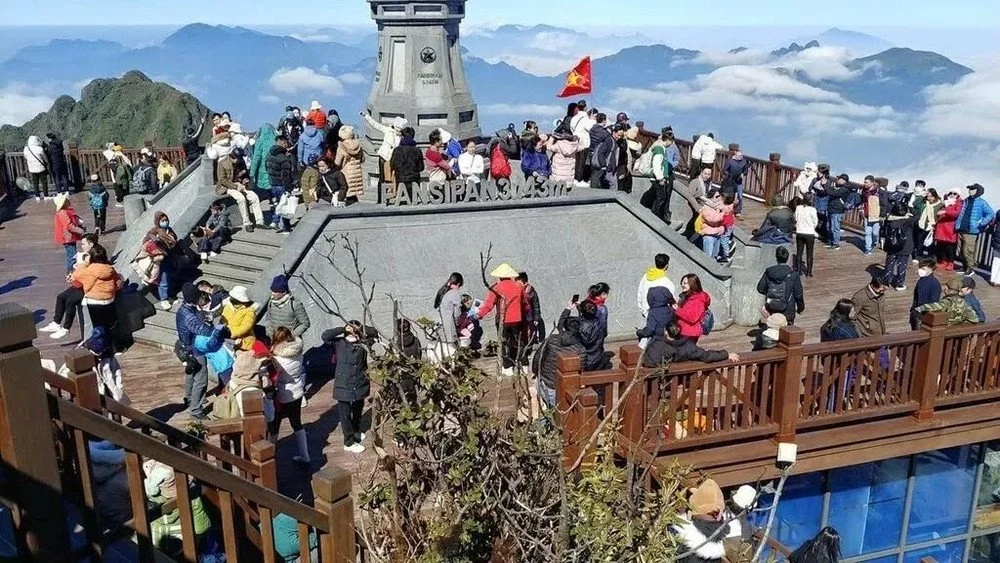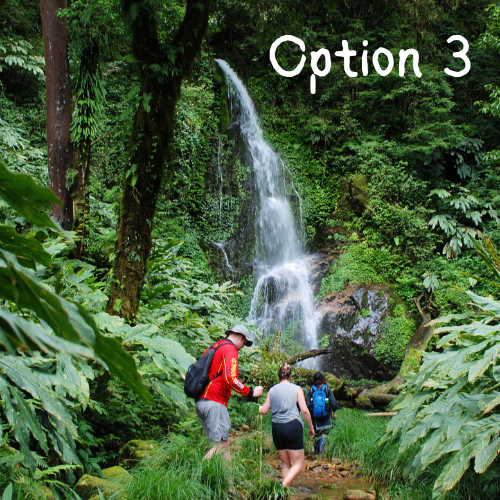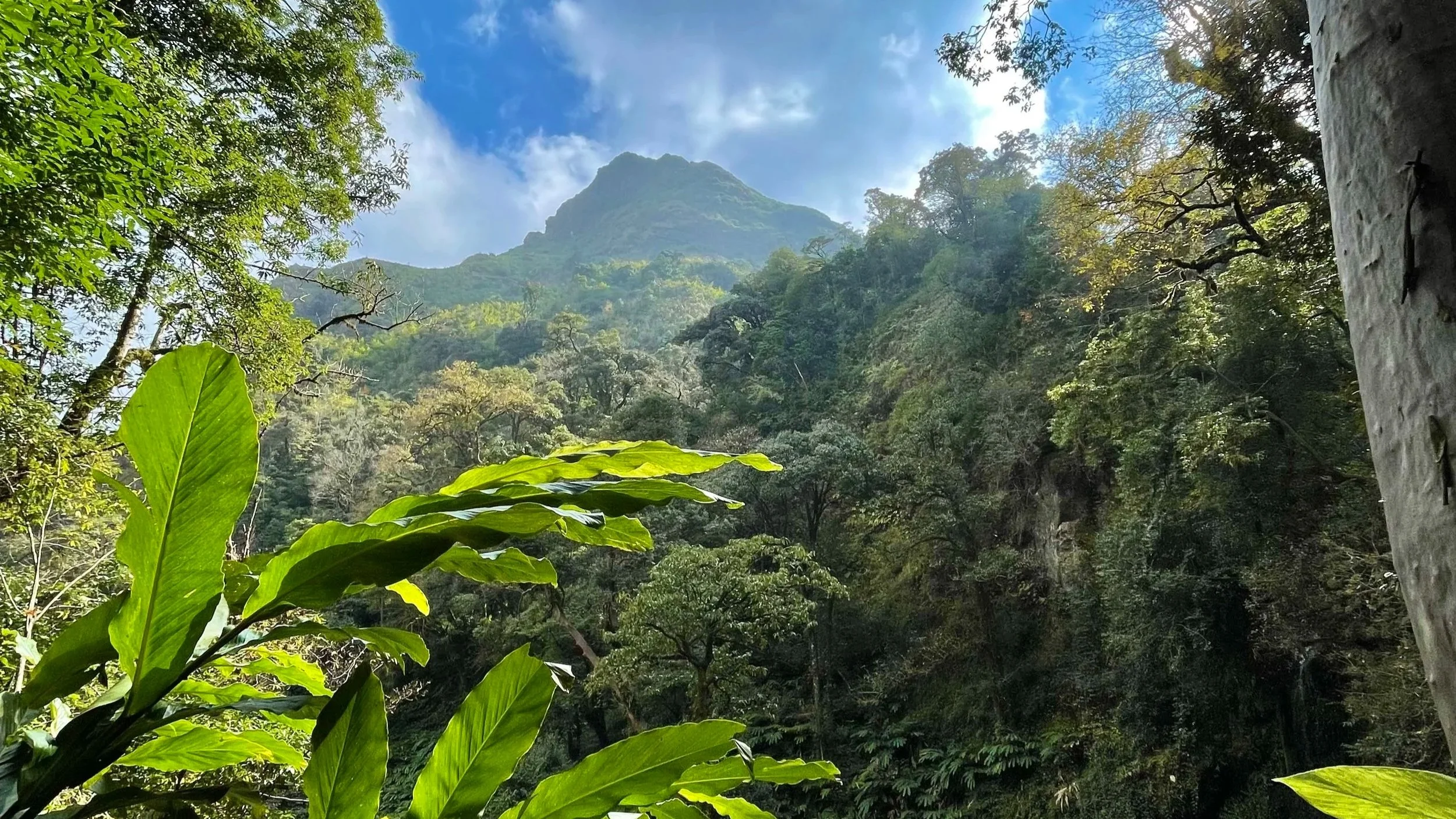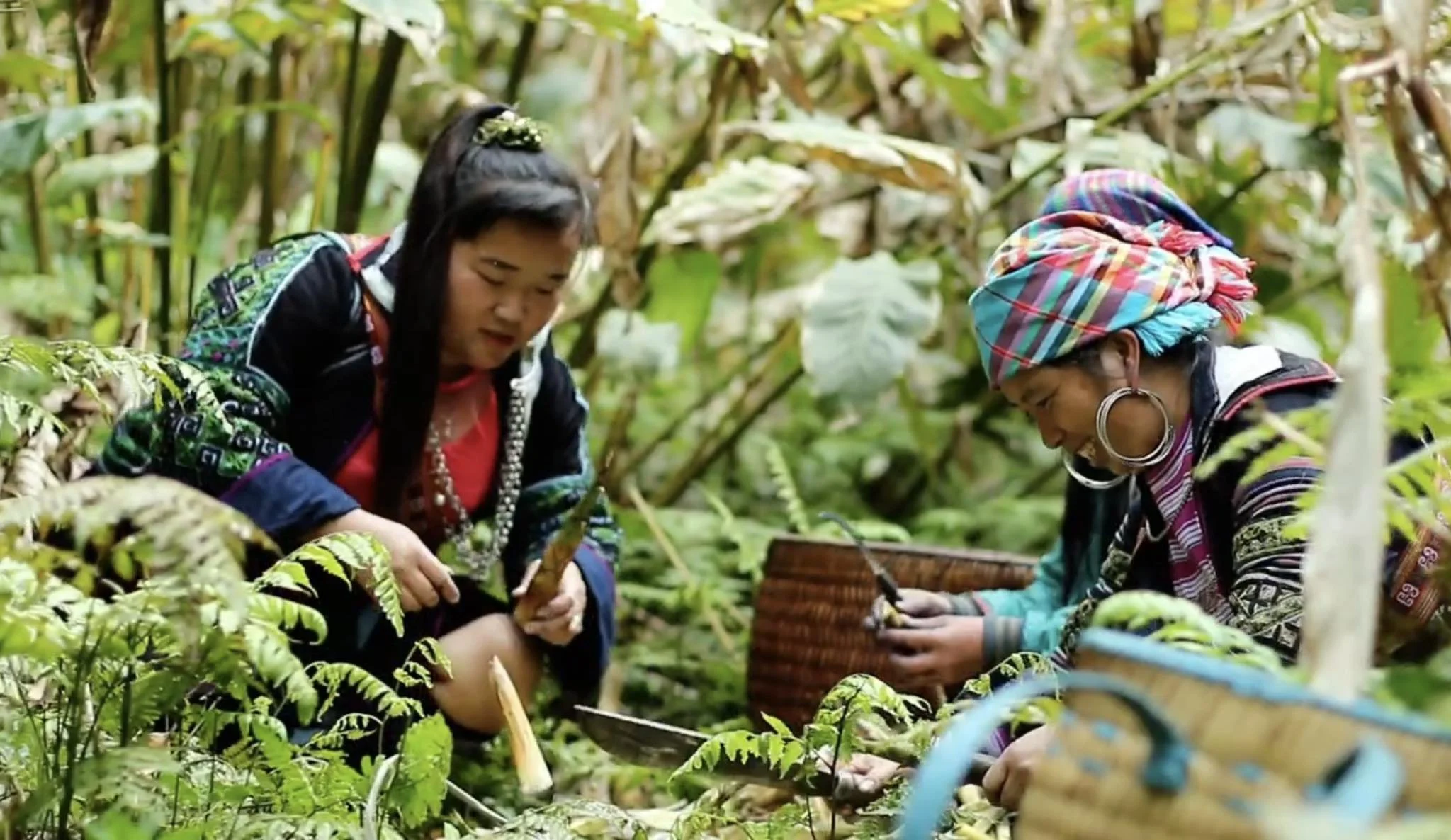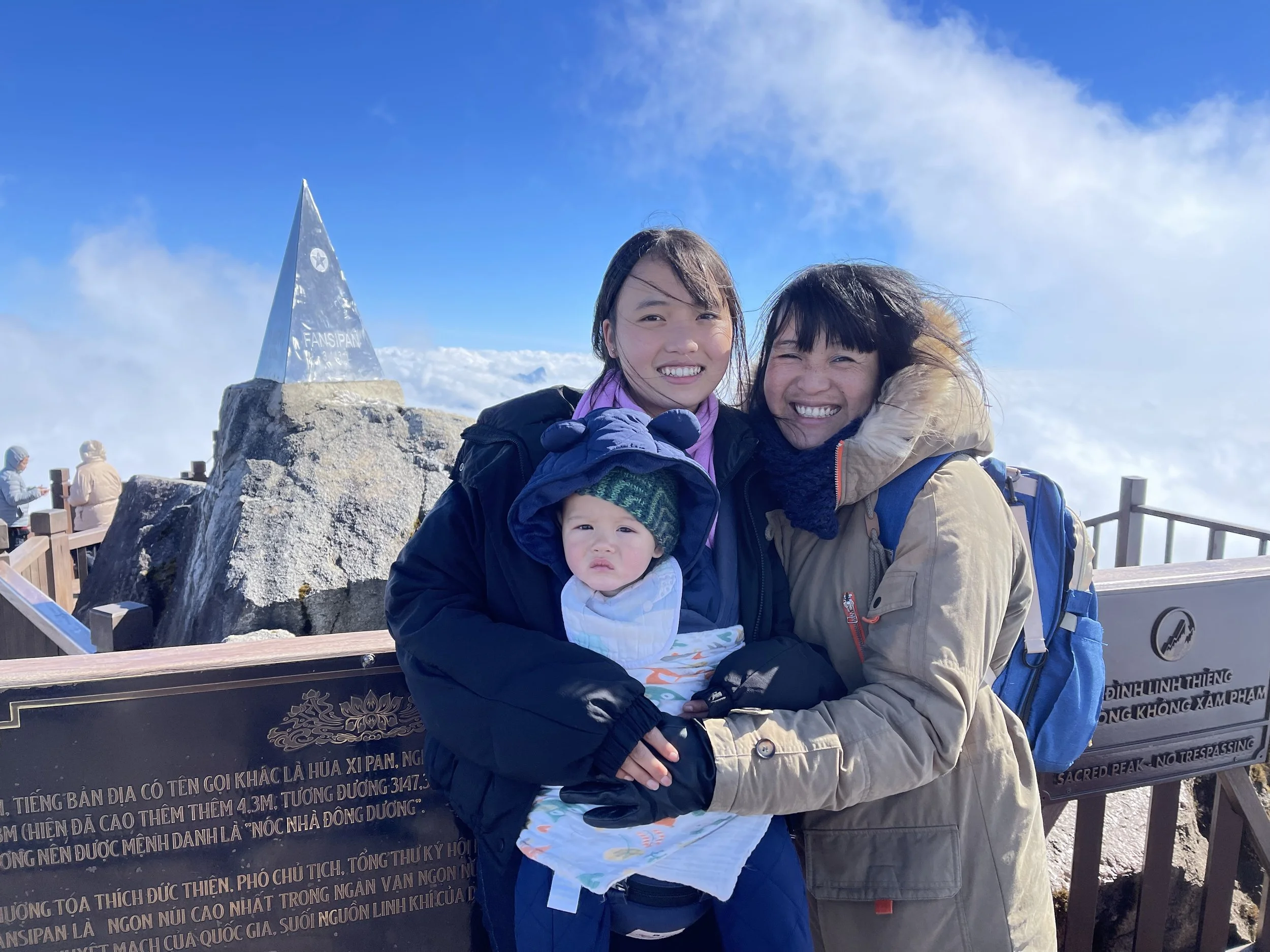
Mount Fansipan
Your Comprehensive Guide to ascending Fansipan Mountain
What is it like to ascend using the SunWorld Fansipan Legend Cable Car?
Most visitors reach Fansipan, Vietnam’s highest peak, by taking the cable car and funicular from Sapa town. This makes the summit accessible to thousands each week, offering dramatic aerial views when the weather cooperates. The top features an expansive temple complex and landscaped gardens, which, while beautiful, are clearly designed for mass tourism. Visitors should prepare for colder temperatures, sudden weather changes, and the inevitable crowds, though arriving early can provide a calmer experience. For many, it’s a convenient way to stand on the “Roof of Indochina” without the challenges of a remote mountain climb.
That said, the reality at the summit often feels more like a commercial attraction than a wilderness experience. Crowds, noise, souvenir stalls, and loudspeakers replace any sense of solitude, and the mountain is frequently cloaked in fog, with clear panoramas being rare and fleeting. The experience can be both awe-inspiring and underwhelming: you may tick the summit off your list, but visibility and atmosphere are left largely to chance. Ultimately, Fansipan is best enjoyed with realistic expectations; embracing the accessibility, cultural flair, and occasional magical views, while accepting that solitude, clear skies, and untouched nature are unlikely.
Top Tips for the Fansipan Cable Car
1. Skip the tours and book direct.
There’s no need to pay extra for guided tours or packages. The easiest and cheapest way is to buy your ticket directly on the official SunWorld Fansipan Legend website. This gives you flexibility on timing and ensures you’re not tied to a tour group’s schedule. Likewise, booking platforms like Klook act as an intermediaries; thus, the responsibility for cancellations and refunds often lies with the individual service providers. They charge a considerable commission. It is better to book direct with SunWorld.
2. Go early in the morning.
Crowds peak from late morning through midday, when large tour groups arrive. If you take the first cable car of the day, you’ll enjoy a quieter summit, shorter lines for photos, and a better chance of catching clear views before the mountain fog rolls in.
3. Dress for the altitude and weather.
Temperatures at the summit are often 10°C colder than in Sapa town, with damp fog and wind making it feel even chillier. Wear layers, bring a rain jacket, and be prepared for quick weather changes. This will keep you comfortable even if visibility drops.
What are the options for Trekking Mt. Fansipan?
Trekking Fansipan is a demanding, often muddy and slippery climb through steep forest trails that tests both fitness and patience. The one-day trek is a brutal push: relentless uphill, limited time for breaks, and an exhausting descent that can feel more punishing than the climb. It’s best suited to very fit hikers or those who want bragging rights more than enjoyment, as the pace is fast and the experience often more slog than scenery.
The two-day trek is more manageable, breaking the ascent with a night in a basic mountain camp before a sunrise summit attempt. It offers camaraderie, a slightly more relaxed pace, and a better chance of catching clear views before cable car tourists arrive. Fog and rain are common, and leeches or cold damp weather can still make it uncomfortable. Both treks deliver a real sense of achievement, but the summit itself often feels anticlimactic, crowded with infrastructure and day-trippers. The reward lies more in the effort and endurance than in untouched wilderness or guaranteed views. Hoang Lien Son National Park regulations mean that a trekking guide for Fansipan is manditory. Guides provide crucial local knowledge and ensure safety, which is a primary concern given the mountain's difficulty and risk of accidents. While not always strictly enforced by park rangers, the local authorities and guides make it compulsory for safety and permit requirements.
Trail 1: Tram Ton Trail
Beginning at approximately 1,850 meters, this trail starts at the national park entrance near Tram Ton Pass (often called Heaven’s Gate), the highest mountain pass in Vietnam. From this point, the summit is about 11 kilometers away. The route runs predominantly north to south, though it twists and winds significantly. The overall altitude gain is greater than it first appears because the final section of the trail is undulating.
This is the most popular route used by guided groups, as it is considered the easiest. The standard package follows a two-day, one-night itinerary, with an overnight camp at 2,800 meters at the end of the first day. Exceptionally fit hikers sometimes complete the route in a single day. Many groups descend the mountain via this trail, which is described in detail in various accounts of completed treks.
Trail 2: Sin Chai Trail
Named after the small Hmong settlement at its starting point, the Sin Chai trail is the wildest, steepest, shortest (in terms of distance), and most treacherous of the three known routes. In places, the path is overgrown and little used, making it easy to lose the trail occasionally. Contrary to some reports, ropes or special climbing gear are not required, although certain sections can feel precarious.
The total distance is about 9 kilometers, running in a roughly northeast-to-southwest direction. The trail begins at around 1,380 meters, requiring a greater ascent than the Tram Ton route.
Trail 3: Cat Cat Trail
The Cat Cat trail is the longest of the three routes. It begins from the Hmong settlement of Cat Cat village, located close to Sapa town, at an elevation of approximately 1,300 meters.
How to get to the Tram Ton Trailhead
Sapa is the main base for organising and beginning your climb of Mount Fansipan. From the hotels, hostels and homestays in and around Sapa, it takes about twenty five minutes by taxi to reach the trailhead at the top of the Tram Ton Pass, also known as O Quy Ho Pass. If you’re on an organised tour, the trekking company will usually include transportation. If you’re organising a trek yourself, arrange a Grab or Taxi and your driver to take you to Thác Tình Yêu (Love Waterfall), which lies about fifteen kilometres west of Sapa on road QL4D. The car park and entrance to Love Waterfall are on the left as you approach from Sapa, located at the top of the pass, which marks the start of the Tram Ton Pass road winding around the mountains to the west.
Opposite the entrance to Love Waterfall is a large billboard labelled ‘Hoang Lien Son National Park’, displaying a simple map of the three trails that lead to the summit of Mount Fansipan, along with the nearby campsites. The trail beginning at Love Waterfall (also called the Tram Ton Pass trail) is the one furthest to the right on this map, although it offers little detailed information. From the car park, go through the entrance arch marked ‘Suối Vàng–Thác Tình Yêu’, then bear left opposite the waterfall ticket booth. You will see a small signboard titled ‘Rules for Conquering Fansipan Summit’, with an arrow below it pointing towards ‘Fansipan Summit 11.2 km’.
There are usually forest rangers at the ranger station and they will check your guides licence and make a note of those making the ascent.
Taking a taxi is the simplest way to reach the trailhead at Love Waterfall. Taxis are plentiful in Sapa, and the fare costs around 250,000 VND (approximately 10 USD). Alternatively, you could hire a motorbike taxi from Sapa, which is cheaper, or arrange a shared minivan through your hotel if you are travelling in a group. It is also possible to go by rented motorbike, though you would then need to return to the trailhead after your climb to collect it.
Many trekkers choose to walk upwards along one of the trails, then descend via the cable car system. The cable car offers a less strenuous return, especially after a tiring climb. It’s important to note that the last downhill cabins typically depart from the summit around 5:00pm weekdays and 4:00pm at weekends (though on some days the time may differ slightly). Tickets for descent can be purchased at the mountain station. The pricing structure is somewhat controversial: the one-way cost for descending is the same as a full round-trip fare, making the system advantageously profitable for Sun World. Round-trip cable car tickets (Hoang Lien ↔ Fansipan Station) cost 800,000 VND for adults on weekdays & Sundays, rising to 850,000 VND on Saturdays & holidays.
Alternative to trekking down: Cable Car Descent from the Summit
What Weather can I expect and When is the best time to climb?
As with most high mountains, the weather on Fansipan is extremely unpredictable and can change within minutes at any time of year. In the morning, the summit may be clearly visible from Sapa, shining in the fresh highland light. However, by the time you reach the trailhead, just fifteen minutes later, thick cloud may have descended over the lower slopes and a light rain begun to drift through the forest. Temperatures also vary greatly from hour to hour.
When walking through the dense forests on the lower slopes, the heat and humidity will likely have you removing layers. Yet, once you emerge onto an exposed, treeless ridge, the cold wind from the north can quickly chill you to the bone and have you reaching for your jacket.
Most travellers agree that the best times to climb Fansipan are in spring (March and April) and autumn (September and October). During these months, there is a good chance of sunshine for at least part of the climb, and temperatures are generally mild.
An ETHOS Journey on Fansipan
Rather than joining the crowds at the summit of Fansipan, an ETHOS experience follows a gentler and more rewarding path. Instead of climbing to the peak, the journey winds through the foothills of the Hoang Lien Son Range, far from the bustle of mass tourism.
Remaining below 2,200 metres, the trails reveal a world that is often overlooked. Here lies a sub-montane, sub-tropical cloud forest where cool mist drifts through the trees and the sound of rushing streams fills the air. The water tumbles over smooth stones and disappears into thickets of green, while towering trunks wrapped in moss and lichen form a natural cathedral above. Orchids cling delicately to branches and the calls of unseen birds echo from the canopy.
The adventure is not about height gained but about depth of experience. It is a chance to wander in quiet places where the mountain feels alive and untamed. The forest sets its own rhythm and walkers are invited to match it, pausing to notice the shifting light, the play of clouds across the ridges, and the raw beauty of the Hoang Lien Son. This journey is not defined by standing on Vietnam’s highest point. It is about truly being on the mountain and allowing its spirit to unfold. With ETHOS guides leading the way, the paths become more than a walk. They are an invitation to discover the mountain’s soul, where culture, nature and adventure come together in harmony.


